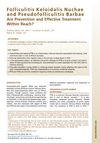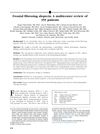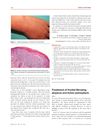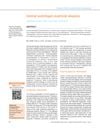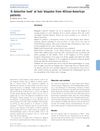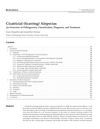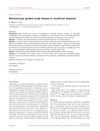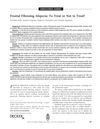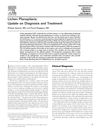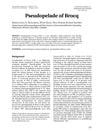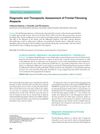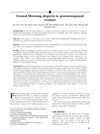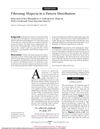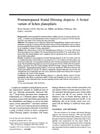Primary Scarring Alopecias
January 2015
in “
Current problems in dermatology
”
primary scarring alopecias Discoid Lupus Erythematosus DLE Lichen Planopilaris LPP Frontal Fibrosing Alopecia FFA oral corticosteroids antimalarials cicatricial alopecia Graham-Little-Piccardi-Lassueur Syndrome Fibrosing Alopecia in a Pattern Distribution FAPD antibiotics immunomodulatory drugs scarring alopecia corticosteroids antimalarial drugs immune-mediated hair loss immunomodulators
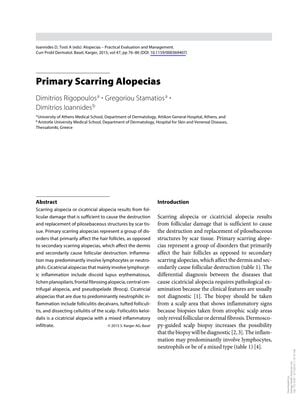
TLDR The document concludes that primary scarring alopecias cause permanent hair loss, have unpredictable outcomes, and lack definitive treatments, requiring personalized care.
The document from 2015 provides an overview of primary scarring alopecias, a group of disorders characterized by irreversible hair loss due to follicular destruction and scarring. It details the clinical features, pathogenesis, diagnosis, prognosis, and treatment of various types, including Discoid Lupus Erythematosus (DLE) and Lichen Planopilaris (LPP), with its variant Frontal Fibrosing Alopecia (FFA). DLE is treated with medications like oral corticosteroids and antimalarials, but hair regrowth is not possible once scarring occurs. LPP, the most common cicatricial alopecia, and FFA, affecting mainly postmenopausal women, are immune-mediated and may respond to steroids among other treatments, but disease arrest is rare. Other conditions like Graham-Little-Piccardi-Lassueur Syndrome, Fibrosing Alopecia in a Pattern Distribution (FAPD), and others are also discussed, each with unique features and treatment challenges, including corticosteroids, antibiotics, and immunomodulatory drugs. The document notes the unpredictable nature of these disorders and the lack of definitive treatments, underscoring the need for personalized management. It does not specify study participant numbers, focusing instead on condition overviews and management approaches.
